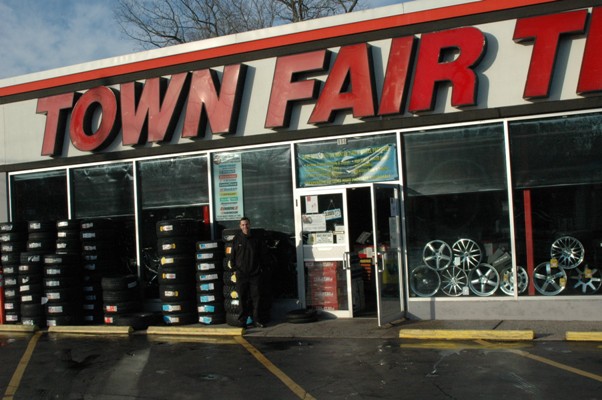
Like most of her neighbors, Andree Kaminsky ”” who operates a small business out of her Stamford home ”” experienced significant damage following Hurricane Sandy, with the storm putting the basement and first floor of her home in shambles.
Unlike many of her neighbors, however, Kaminsky has both structural and contents flood insurance policies through a New York City-based carrier.
But while her primary insurance is covering some of the damage, she said she doesn”™t anticipate much help from her flood insurance provider or the U.S. Small Business Administration.
After Hurricane Irene swept through the region a year ago, Kaminsky said she was told by her insurer that her contents coverage policy was invalid because two of the walls of her home”™s first floor are partially below ground, qualifying the space as a basement.
“It makes me curious why someone sold me that and let me pay for that for all those years,” she said, adding that she has been paying premiums on the flood insurance policies for 20 years.
Kaminsky, who runs the business SingerExpress.com out of her home, a website seeking to connect singers with producers, said the outages caused by Sandy forced her to send employees to coffee shops and libraries to maintain the website and its membership services in the days following the storm.
She said she fought to get her insurer to cover the damage to her home after Irene but eventually gave up. However, feeling unsettled by the dispute, she said she decided to keep the policies, just in case of another storm.
“I fought as hard as I could,” she said. “I just said ”˜I can”™t do this anymore”™ and now I”™m going through the same thing.”
As insurance companies continue to process damage claims for Hurricane Sandy, there”™s expected to be a significant gap between the total damage and what will be covered by insurers.
Damage estimates have topped out at higher than $50 billion, while EQECAT, a risk management consulting firm, projects between $10 billion and $20 billion of the damage will be covered under policies.
Law firms are preparing for claim disputes between insurance carriers and homeowners and business owners across the region, said attorney Finley T. Harckham of Anderson Kill & Olick P.C., which has an office in Stamford.
“That”™s a huge amount not covered or subject to dispute,” Harckham said. “It”™s clear what”™s coming over this.”
The primary reason why insurance companies are expected to cover less of the projected damage is because most home and business owners don”™t have flood insurance, Harckham said. It”™s also because most insurance policies don”™t cover lost wages, power outages or extra expenses incurred during a disaster, unless a business has contingency business coverage.
In cases where insurance doesn”™t cover the full cost of physical damage or economic losses, home and business owners can apply for long-term, low-interest SBA disaster loans of up to $2 million.
As of Nov. 26, the SBA has received applications for roughly 279 home and 27 business loans and has approved 33 home and two business loans so far, according to Connecticut SBA District Director Bernard M. Sweeney.
After Hurricane Irene, the SBA approved applications for 298 out of 811 home loans and 24 out of 99 businesses loans.
Sweeney said applicants are typically denied if they don”™t provide all the necessary documents or keep track of their financials properly. He said many applicants will apply for more damages than they”™re qualified to seek relief for and will turn in incomplete applications.
Still, Sweeney encouraged home and business owners to apply for physical property damage loans by Jan. 28 and economic injury loans by July 31, 2013.
Editor’s note: Updated Jan. 9, 2013 to reflect the extended deadline of Jan. 28 for physical property damage loans.






















After Sandy, what will insurance cover? Insurance Companies will try to cover the least possible coverage. Both Health and Home Insurance Co. Post-Hurricane have in the past and continue to defied all State and Federal Laws by providing the least possible coverage in order to obtained the most possible profitable outcome. All consumers must complaint to their State Insurance Commissioners, Governors, Senators and Law Makers in order to stop this madness.